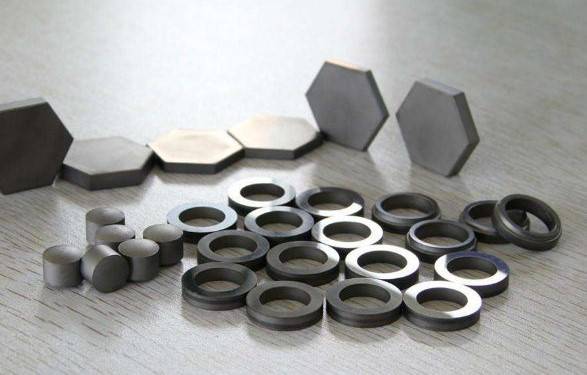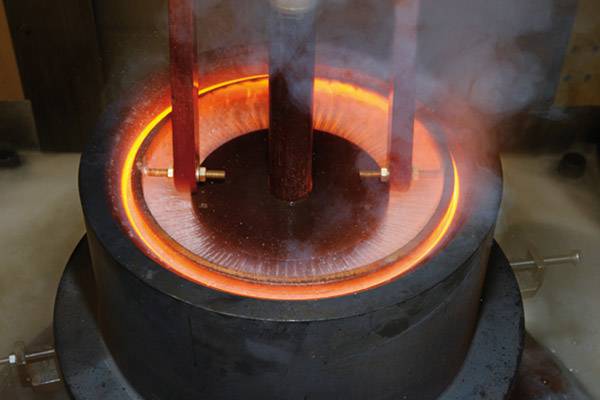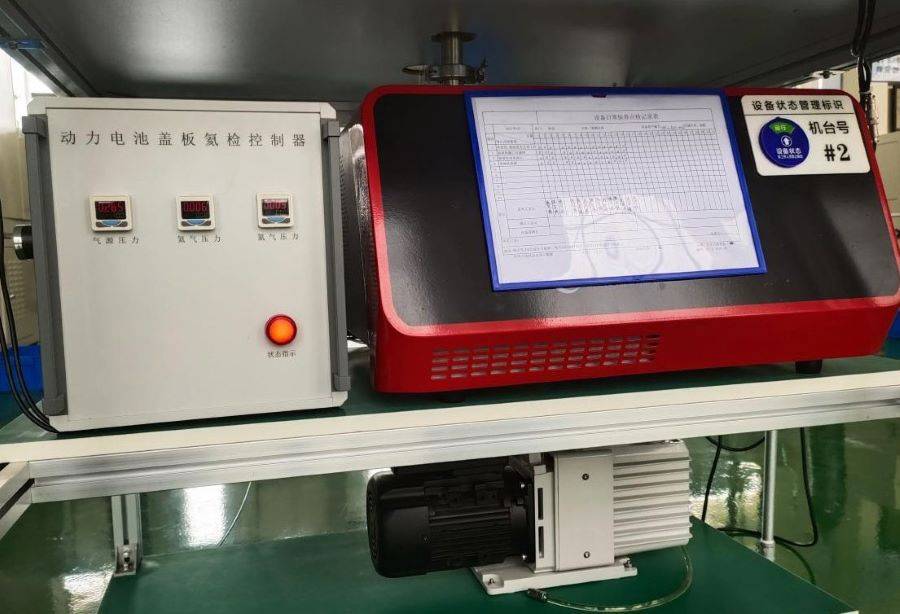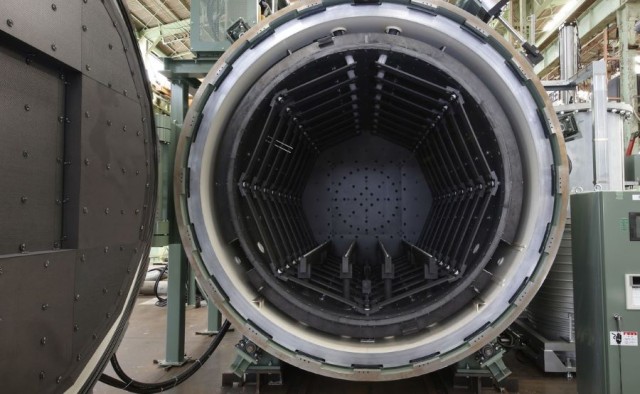Introduction to Vacuum Furnace Technology
Applications in Industries
Vacuum furnaces are not confined to the aerospace and automotive sectors; their applications span a multitude of industries, each benefiting from the precise control and oxidation-free environment they provide. In the aerospace industry, vacuum furnaces are indispensable for processes such as brazing, aging, and solution heat treatment, which are crucial for the integrity and performance of high-stress components. Similarly, the automotive industry leverages these furnaces for enhancing the durability and efficiency of engines and drivetrain components through similar heat treatment processes.
Beyond these well-known applications, vacuum furnaces find significant use in the textile industry for dyeing and finishing, where the absence of oxygen prevents color degradation and ensures vibrant, long-lasting hues. The plastic industry employs vacuum furnaces for polymer curing, ensuring uniform cross-linking without the risk of oxidation that could compromise material properties. In the glass industry, these furnaces are used for melting and refining glass, producing high-quality, flawless products.
The biomedical industry also benefits from vacuum furnace technology, particularly in the production of medical implants and instruments, where sterility and material purity are paramount. The paint and rubber industries use vacuum furnaces for curing coatings and vulcanizing rubber, respectively, to achieve superior surface finishes and mechanical properties. Additionally, the ceramics industry relies on vacuum furnaces for sintering advanced ceramics, which require precise temperature control and an oxygen-free environment to achieve desired microstructures.

Metallurgical applications are another cornerstone, where vacuum furnaces are used for processes such as annealing, melting, and alloying, ensuring that metals maintain their integrity and performance under extreme conditions. Each of these industries leverages the unique capabilities of vacuum furnaces to achieve superior product quality and performance, underscoring the versatility and importance of this technology across a broad spectrum of industrial applications.
Overview of the Paper
This paper delves into the multifaceted world of vacuum furnace technology, tracing its historical roots, elucidating its underlying principles, and dissecting its core components. By exploring the inception of vacuum furnaces in the 1930s, we will uncover how these early designs have evolved into the sophisticated systems used today. The paper will also examine the theoretical framework that governs the operation of vacuum furnaces, including the critical role of vacuum levels in heat treatment processes.
Moreover, the paper will highlight the essential components that make up a vacuum furnace, such as the high-temperature zone and the quenching system, each playing a pivotal role in achieving precise and effective heat treatments. Additionally, we will discuss the practical applications of vacuum furnaces in the aerospace and automotive industries, where they are indispensable for processes like brazing, aging, and solution heat treatment, ensuring materials remain free from oxidation.
Through this comprehensive overview, readers will gain a deeper understanding of the intricate technology that underpins modern industrial processes, highlighting its significance in maintaining the integrity and performance of materials in high-stakes industries.
Historical Development
Early Use in the 1930s
The advent of vacuum furnaces in the 1930s marked a significant milestone in material processing, particularly for titanium sponge materials. Initially, these furnaces were employed for annealing and melting operations, which were critical for the development of high-strength, lightweight alloys. The early designs were characterized by their hot-wall construction, which facilitated high-temperature operations without the need for diffusion pumps. This simplicity in design was essential during a time when the technology was still in its nascent stages.
The primary advantage of these early vacuum furnaces was their ability to create an oxygen-free environment, essential for the treatment of reactive metals like titanium. This was achieved through the use of hot-wall technology, where the furnace walls were heated to high temperatures, effectively reducing the outgassing of materials and maintaining a stable vacuum. The absence of diffusion pumps in these early models meant that the vacuum levels were lower compared to modern systems, but they were sufficient for the rudimentary processes of the time.
The introduction of vacuum furnaces in the 1930s not only revolutionized the processing of titanium but also laid the groundwork for future advancements in vacuum technology. The lessons learned from these early applications were instrumental in the development of more sophisticated systems that would later be used in the aerospace and automotive industries.
Theory and Operation
Vacuum Levels and Heat Treatment
Vacuum technology plays a crucial role in heat treatment processes by employing evacuation systems that create various vacuum levels, each influencing the vapor pressure of materials and potentially mitigating process-related issues. The primary distinction between vacuum heat treatment and other thermal processing methods lies in the precise control of surface reactions, or their complete absence. This control is essential as it prevents oxidation and decarburization, common problems in conventional heat treatment methods.
In vacuum heat treatment, the environment is meticulously controlled to ensure that the air is extremely thin. This controlled atmosphere allows for the removal of contaminants and, under specific conditions, the degassing or conversion of surface oxides on materials. The absence of oxygen in the vacuum environment significantly enhances the quality and longevity of the treated components, often extending their service life by several times compared to components treated through traditional methods.
| Vacuum Level | Pressure Range (Pa) | Application Examples |
|---|---|---|
| Low Vacuum | 10^5 ~ 10^2 | Industrial, food and packaging |
| Medium Vacuum | 10^2 ~ 10^-1 | Coatings, analytical technology |
| High Vacuum | 10^-1 ~ 10^-5 | Semiconductor technology, research |
| Ultra High Vacuum | < 10^-5 | Medical technology, solar |
The selection of the appropriate vacuum level is pivotal, as it determines the effectiveness of the heat treatment process. Vacuum levels typically range from low vacuum (10^5 ~ 10^2 Pa) to ultra-high vacuum (< 10^-5 Pa). Each level serves distinct purposes, from industrial applications to advanced research and medical technologies.

Vacuum heat treatment processes encompass several critical steps, including determining the heating system parameters (temperature, time, and mode), regulating the vacuum degree and air pressure, and selecting the cooling mode and medium. These processes ensure that the treated materials achieve optimal mechanical properties, free from the common defects associated with conventional heat treatments.
Evacuation Systems
The evacuation system in a vacuum furnace is a meticulously designed sequence of components, each playing a crucial role in achieving the desired vacuum levels. This system is typically composed of three primary stages: mechanical pumps, booster pumps, and diffusion pumps.
-
Mechanical Pumps: These are the first line of defense in the evacuation process. They operate by physically removing gases from the chamber, creating an initial low-pressure environment. Mechanical pumps are essential for establishing the baseline vacuum required for subsequent stages.
-
Booster Pumps: Following the mechanical pumps, booster pumps enhance the evacuation process by increasing the pumping speed and further reducing the pressure. These pumps are particularly effective in handling large volumes of gas, making them indispensable for maintaining a stable vacuum.
-
Diffusion Pumps: The final stage, diffusion pumps, are designed to achieve ultra-high vacuum levels. They work by directing a high-speed stream of oil vapor into the vacuum chamber, which then condenses back into liquid form, trapping residual gases in the process. This method ensures that the vacuum levels are precisely controlled, meeting the stringent requirements of various heat treatment processes.
Each stage of the evacuation system is interconnected, with the output of one stage serving as the input for the next. This sequential approach allows for a gradual and controlled reduction in pressure, ultimately achieving the optimal vacuum conditions necessary for the efficient operation of the vacuum furnace.
Design and Components
High Temperature Zone
The high temperature zone within a vacuum furnace is meticulously designed to function as an adiabatic chamber, a feature that significantly minimizes heat transfer. This design is crucial for maintaining the integrity and performance of materials subjected to extreme temperatures. The construction of this zone predominantly employs materials such as molybdenum and graphite, which are chosen for their exceptional thermal stability and resistance to high-temperature degradation.
Molybdenum, known for its high melting point and low thermal expansion, is ideal for creating components that can withstand the intense heat generated within the furnace. Its ability to retain strength at elevated temperatures ensures that the structural integrity of the high temperature zone is preserved, even under prolonged exposure to extreme conditions. On the other hand, graphite, with its excellent thermal conductivity and chemical inertness, is utilized for its ability to evenly distribute heat and prevent localized overheating.
The combination of these materials not only enhances the efficiency of the vacuum furnace but also extends its operational lifespan by reducing the wear and tear associated with continuous high-temperature processes. This strategic selection of materials underscores the critical role of the high temperature zone in the overall functionality and reliability of the vacuum furnace, making it an indispensable component in industries where precision and material integrity are paramount.
Quenching System
Vacuum furnaces employ a sophisticated quenching system to rapidly cool metals, thereby enhancing their structural integrity and mechanical properties. This process involves the circulation of inert gases, such as nitrogen or argon, through the furnace chamber. The rapid cooling achieved through this method is crucial for inducing specific metallurgical transformations that cannot be attained through slower cooling rates.
Quenching in vacuum furnaces is not merely about cooling; it is about controlled cooling to achieve precise outcomes. The inert gas acts as a medium that absorbs heat from the heated metal, facilitating a quick transition from the high-temperature phase to a lower-temperature, stable phase. This rapid thermal shift can lead to the formation of martensite in steels, a phase known for its hardness and wear resistance.
Moreover, the quenching process in vacuum furnaces can be fine-tuned by adjusting parameters such as gas flow rate and pressure. These adjustments allow for customization of the cooling rate, enabling the attainment of diverse material properties tailored to specific industrial applications. For instance, in aerospace components, where weight reduction and strength are critical, the quenching system ensures that the metal achieves the optimal balance of hardness and toughness.
In summary, the quenching system in vacuum furnaces is a critical component that leverages inert gases to achieve rapid and controlled cooling, thereby imparting desirable metallurgical properties to the treated metals. This system is integral to the functionality and efficiency of vacuum furnaces, particularly in high-stakes industries such as aerospace and automotive.
Troubleshooting and Maintenance
Common Issues and Solutions
Table 3 enumerates several potential malfunctions that can occur within a vacuum furnace system, each with specific diagnostic and corrective measures. One of the most common issues is system leakage, which can compromise the integrity of the vacuum environment. To address this, operators often employ helium leak detectors, which are highly sensitive and can pinpoint the exact location of leaks. These detectors work by introducing helium into the system and monitoring for any escape, allowing for precise repair.
Another frequent problem is diffusion pump oil contamination. Over time, the oil in diffusion pumps can become contaminated, leading to reduced efficiency and potential system failure. Regular maintenance involves checking pump oil levels and quality. If contamination is detected, the oil must be replaced promptly to ensure the pump operates at optimal performance. Additionally, filters and traps can be installed to capture contaminants before they reach the oil, extending its lifespan.
Other issues listed in Table 3 include mechanical pump failure and inadequate vacuum levels. For mechanical pump failure, routine inspections and timely replacement of worn parts are essential. In the case of inadequate vacuum levels, it may be necessary to upgrade the evacuation system, potentially adding booster pumps or enhancing the existing pump capabilities.

By systematically addressing these common issues, operators can maintain the efficiency and reliability of their vacuum furnaces, ensuring consistent and high-quality results in heat treatment processes.
Conclusion
Importance and Considerations
Vacuum furnaces play a pivotal role in ensuring the purity and integrity of materials, particularly in industries where contamination can lead to catastrophic failures. The primary benefit of using vacuum furnaces is the prevention of oxidation, which is crucial for processes like brazing, aging, and solution heat treatment in the aerospace and automotive sectors. By operating in a controlled, oxygen-free environment, these furnaces eliminate the risk of surface reactions that could compromise the structural and mechanical properties of the materials being processed.
However, the decision to invest in a vacuum furnace is not solely based on its advantages. The initial and operational costs associated with these advanced systems are significant, necessitating a thorough economic analysis. Companies must consider factors such as the frequency of use, the scale of production, and the long-term benefits of enhanced product quality. For instance, while the upfront cost of a vacuum furnace may be high, the reduction in material waste and the improvement in product reliability can lead to substantial savings over time.
Moreover, the selection of a vacuum furnace should also take into account the specific requirements of the processes it will be used for. Different applications may necessitate varying levels of vacuum, which can influence the choice of evacuation systems and the overall design of the furnace. For example, high-temperature processes may require specialized materials like molybdenum and graphite to withstand extreme conditions, while quenching systems may need to be optimized for specific inert gases to achieve the desired metallurgical properties.
In summary, while vacuum furnaces are indispensable for maintaining material purity and preventing contamination, their adoption requires a careful evaluation of both the technical and economic implications. Companies must weigh the benefits of enhanced product quality against the costs involved, ensuring that the investment aligns with their operational needs and strategic objectives.
Related Products
- Vacuum Hot Press Furnace Machine Heated Vacuum Press
- Vacuum Heat Treat Sintering Brazing Furnace
- Vacuum Heat Treat and Pressure Sintering Furnace for High Temperature Applications
- Vacuum Hot Press Furnace Heated Vacuum Press Machine Tube Furnace
- Lab-Scale Vacuum Induction Melting Furnace
Related Articles
- Vacuum Melting Furnace: A Comprehensive Guide to Vacuum Induction Melting
- Materials Science with the Lab Vacuum Furnace
- Comprehensive Guide to Vacuum Hot Press Furnace Application
- Maximizing Efficiency and Precision with Vacuum Graphite Furnaces
- Exploring Tungsten Vacuum Furnaces: Operation, Applications, and Advantages



















